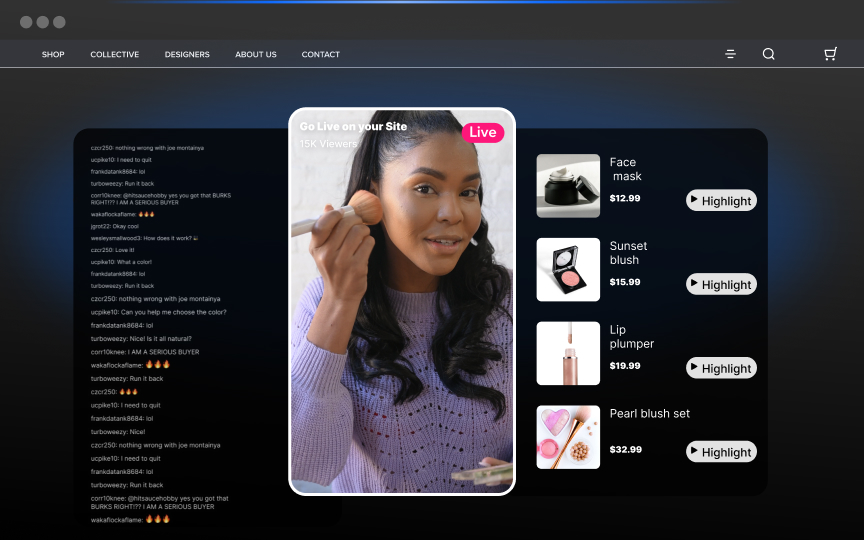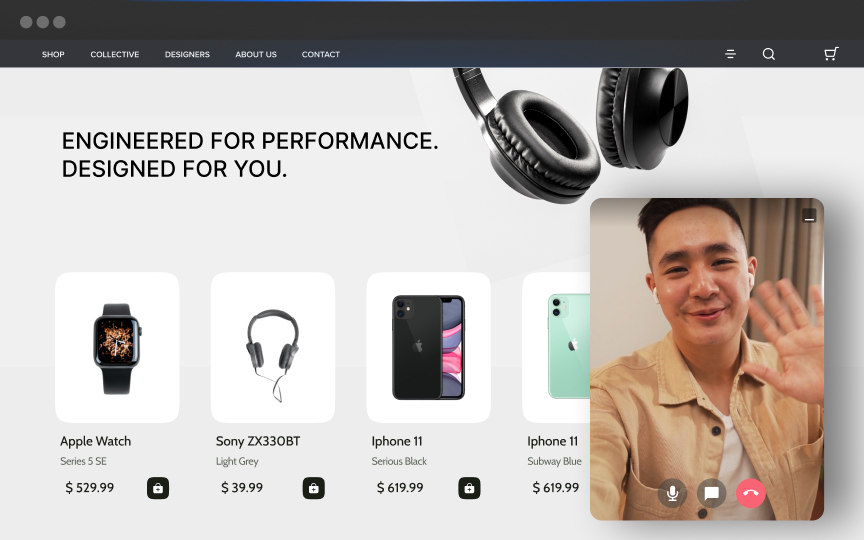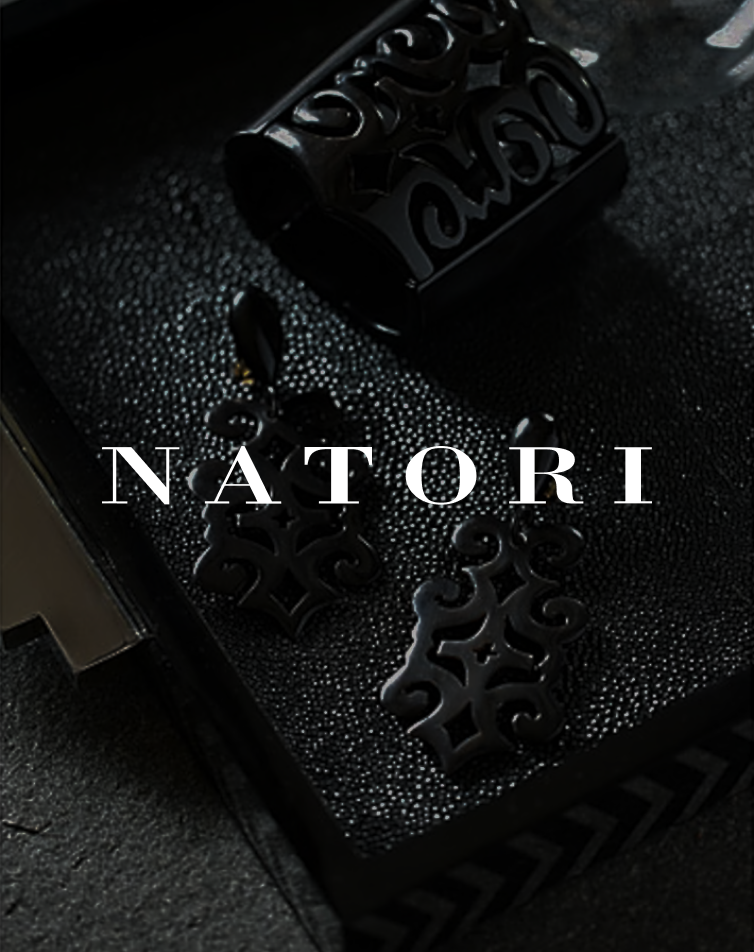Maximizing Mobile Engagement with Shoppable Videos
With 75% of global video consumption now happening on mobile devices, brands face a new frontier where mobile, video, and commerce converge. Today's consumers expect entertainment and shopping to blend seamlessly on their screens. Enter shoppable videos—the direct path from inspiration to purchase without leaving the viewing experience. This powerful tool transforms ordinary videos into interactive shopping experiences that deliver real results for mobile-savvy shoppers.
Download our 2025 Fashion & Apparel Video Commerce Playbook to futureproof your digital strategy!
Understanding the Mobile Shopper's Journey
Mobile devices have become the command center of our daily lives, making it essential to understand how mobile shoppers think and behave when creating shoppable video experiences.
Mobile users view content differently than desktop users. They watch in short bursts throughout the day—during commutes, in waiting rooms, or while multitasking. With 75% of global video viewing happening on mobile devices, your strategy must account for these viewing habits.
To match these behaviors:
- Keep videos between 15-60 seconds
- Grab attention in the first 3-5 seconds
- Design content for quick, easy consumption
The path to purchase on mobile can be tricky. Common roadblocks include:
- Slow loading times
- Complex navigation
- Lengthy checkout processes
- Limited product information
Shoppable videos solve these problems by embedding product details and purchase options directly in the video, eliminating the need to navigate away.
The psychology behind mobile shopping reveals several key triggers:
- Emotional Resonance: Videos that stir joy, nostalgia, or excitement create stronger connections. Research confirms emotionally engaging content sticks in memory and gets shared more often.
- Social Proof: User-generated content and influencer endorsements build trust through social validation.
- Scarcity and FOMO: Limited-time offers featured in shoppable videos tap into fear of missing out, spurring immediate action.
- Dopamine Reward Cycle: Interactive elements like tappable product tags trigger small dopamine releases, keeping viewers engaged.
Success comes from understanding mobile shoppers' behaviors and psychological triggers to create shoppable videos that both engage and convert. The key? Making the path from discovery to purchase as smooth as possible.
Ready to transform your mobile shopping experience? Explore Firework's shoppable video solutions today!
Strategy #1: Optimize Video Production for Mobile Viewing
Creating shoppable videos that shine on mobile devices requires specific production techniques that capture and hold viewer attention.
Technical Essentials for Mobile Shoppable Videos
- Aspect Ratio: Use vertical (9:16) or square (1:1) formats that maximize screen space on mobile platforms.
- Resolution: Shoot in at least 1080p for crisp visuals. Consider 4K for premium content, but watch file sizes to prevent slow loading.
- Frame Rates: Choose 30fps for general content, 24fps for cinematic feel, or higher rates (60fps-240fps) for smooth motion and slow-mo effects.
- File Compression: Balance quality with file size. Many mobile viewers use cellular data, so bloated files lead to drop-offs.
- Audio Optimization: Remember that people often watch without sound. Include captions or subtitles, and select background music that fits your brand identity.
Creating High-Quality Shoppable Videos on a Budget
Quality mobile shoppable videos don't require expensive gear. Try these budget-friendly approaches:
- Lighting: Harness natural light when possible. Shoot during "golden hour" for warm, flattering light. For indoor shoots, basic portable lighting kits eliminate shadows and ensure consistent illumination.
- Stabilization: Use tripods or gimbals for smooth footage. On a tight budget? Stabilize your phone on flat surfaces or create makeshift supports with household items.
- Audio: A simple external microphone dramatically improves sound quality, which affects how viewers perceive your professionalism.
- Composition: Apply the rule of thirds for balanced, appealing shots. Try creative angles (top-down, low-angle) to make products pop visually.
- Editing: Mobile apps like LumaFusion, Adobe Premiere Rush, or iMovie offer professional-grade editing right on your smartphone.
Remember, successful mobile shoppable videos grab attention quickly and maintain interest throughout. Keep videos concise (15-60 seconds) with an especially strong hook in the first 3-5 seconds.
Create professional-quality shoppable videos with Firework's platform
Strategy #2: Create Seamless Interactive Experiences
The magic of mobile shoppable videos happens when interactive elements enhance rather than interrupt the viewing experience. Success depends on intuitive navigation and touchscreen-friendly design.
Strategic Placement of Interactive Elements
For engaging shoppable videos, place interactive elements like hotspots, product tags, and clickable CTAs thoughtfully throughout your content. These elements should be:
- Visible without being distracting
- Easy to tap with a fingertip
- Relevant to what's on screen
Picture a fashion video where a subtle product tag appears on a featured dress. When tapped, it expands to show details and a "Shop Now" button. This lets viewers explore without leaving the video, reducing purchase friction.
Be careful not to overload your video with too many interactive elements. Too many choices can paralyze decision-making and reduce engagement. Focus on highlighting key products that fit naturally within your video's narrative.
Balancing Entertainment with Commerce
The best shoppable videos find the sweet spot between engaging content and selling products. Here's how to strike that balance:
- Start with Story: Build your video around a compelling narrative that provides value. Your product should play a natural role in the story, not feel like a forced sales pitch.
- Blend Interactions Naturally: Make interactive elements feel like they belong in the content rather than intrusive pop-ups. A cooking tutorial could feature tappable ingredients that lead to product pages.
- Time It Right: Introduce interactive elements when they make sense—like when a product is being demonstrated or discussed. This feels organic rather than pushy.
- Add Valuable Context: Use interactive elements to provide helpful information that enhances understanding of the product. This might include size guides, color options, or user reviews.
Creating a seamless interactive experience that balances entertainment with commerce significantly boosts engagement and conversion rates. Mobile users prefer tap-to-shop convenience, and reducing friction between viewing and buying leads to higher conversions.
Want to see how seamless shopping experiences boost engagement? Discover Firework's Digital Showroom solution
Strategy #3: Implement Personalization at Scale
Personalization transforms ordinary shoppable videos into customer magnets. When viewers see content tailored to their preferences, both engagement and conversion rates soar.
Data-Driven Personalization Techniques
Make the most of your data to create truly personalized experiences:
- Segmentation Models: Build detailed customer segments based on demographics, purchase history, and browsing behavior. This allows you to create targeted videos that speak directly to specific audience groups.
- Dynamic Content Delivery: Set up systems that adapt video content in real-time based on user data. A customer who previously searched for winter jackets might see a shoppable video featuring new arrivals in winter wear.
- Behavioral Triggers: Create personalization rules based on user actions. If someone regularly views fitness content, serve them shoppable videos showcasing workout gear or nutritional products.
- Contextual Relevance: Consider time of day, location, and current events when delivering video content. A food delivery app might show different meal options depending on whether it's breakfast, lunch, or dinner time.
Zero-Party Data Collection Strategies
Beyond tracking behavior, gather information directly from customers to supercharge personalization:
- Interactive Quizzes: Include short quizzes within shoppable videos to collect preferences straight from viewers. A beauty brand could use a skin type quiz to recommend personalized routines.
- Polls and Surveys: Use in-video polls to gauge interest in different product features or styles. This provides valuable data while boosting engagement.
- Preference Centers: Let users directly tell you their preferences, then tailor shoppable video content accordingly.
- Gamification: Add fun, game-like elements that encourage users to share information about their tastes and preferences.
Always respect user privacy when personalizing content. Be transparent about data collection and usage, and give clear opt-out options for those who prefer a more generic experience.
Meet AVA, Firework's AI-powered video assistant and discover how AI can enhance your personalization strategy!
Strategy #4: Master Storytelling for Mobile Attention Spans
In a world where attention is scarce, mastering storytelling for mobile viewers is essential for creating effective shoppable videos. The right techniques can capture attention quickly and keep viewers engaged throughout.
Creating Emotional Connections Quickly
To grab viewers in those critical first seconds:
- Open with a Strong Hook: Use intriguing questions, eye-catching visuals, or before-and-after sequences that make viewers stop scrolling.
- Tap into Universal Emotions: Connect through joy, inspiration, or nostalgia—feelings that resonate instantly with your audience.
- Show Authentic Representation: Feature relatable people or influencers who mirror your target audience to build immediate trust and connection.
Imagine a skincare brand opening their video with a close-up of someone confidently smiling at their reflection—an image that instantly connects with viewers seeking that same self-assurance.
Crafting Compelling Narratives for Brief Formats
When working with short-form video, make every second count:
- Condense the "Hero's Journey": Pack the classic storytelling arc into a bite-sized format while preserving emotional impact.
- Stick to One Clear Message: With limited time, focus on a single key benefit or feature to avoid overwhelming viewers.
- Let Visuals Tell the Story: Use powerful imagery and thoughtful transitions to convey your message quickly without heavy text or voiceovers.
Episodic Content for Ongoing Engagement
Keep viewers coming back by creating content with continuity:
- Create Interconnected Short Videos: Develop a narrative that spans multiple episodes, each highlighting different aspects of your product or brand story.
- Use Cliffhangers: End each video with a teaser that entices viewers to watch the next installment.
- Include User-Generated Content: Invite customers to share their own stories and experiences, building community and authenticity.
A fashion brand might create a "Style Stories" series featuring different influencers styling the same versatile piece in various ways, with each episode teasing the next look.
Ready to tell your brand's story through video? Explore Firework's shoppable video solutions today
Strategy #5: Leverage Emerging Technologies
The mobile commerce landscape is evolving rapidly, with emerging technologies creating new possibilities for shoppable videos. Two game-changers—Augmented Reality (AR) and Artificial Intelligence (AI)—can transform the mobile shopping experience by increasing purchase confidence, reducing uncertainty, and creating more engaging, personalized interactions.
AR Integration Techniques in Shoppable Videos
Augmented Reality brings products to life within shoppable videos:
- Virtual Try-Ons: Let users see how clothing, accessories, or makeup would look on them without physical sampling—a major advantage for beauty and fashion brands.
- Product Visualization: Help customers picture items in their space. Furniture retailers let shoppers place virtual furniture in their rooms to check fit and appearance.
- Interactive Product Demos: Create immersive demonstrations showing features and functions in ways that flat images or traditional videos can't match.
To implement AR effectively in shoppable videos:
- Use platforms with smooth AR integration
- Make AR features intuitive and easy to activate within the video
- Include simple instructions for first-time AR users
- Ensure compatibility across different devices for consistent performance
AI-Powered Personalization in Mobile Shoppable Videos
Artificial Intelligence enhances the relevance and effectiveness of shoppable videos:
- Tailored Product Recommendations: AI algorithms analyze user data to suggest products matched to individual preferences, boosting conversion likelihood.
- Smart Video Overlays: Dynamically adjust video content based on viewer interactions. If someone shows interest in a certain style of clothing, highlight similar items in later scenes.
- Chatbots and Virtual Assistants: Add AI-powered chatbots to provide real-time help, answer product questions, or facilitate purchases directly within the video.
By integrating these technologies, brands create more immersive and effective shoppable video experiences. A beauty brand could use AR for virtual makeup try-ons while AI personalizes product recommendations based on the user's skin type and preferences.
Discover how AVA, Firework's AI assistant, can revolutionize your video strategy
Strategy #6: Optimize for Specific Platforms and Environments
Success with mobile shoppable videos requires tailoring your content to fit where your audience will view it. Different platforms and environments have unique requirements that demand custom approaches.
Optimizing Shoppable Videos for Social Media Platforms
Each social platform has its own rules and user behaviors to consider:
Instagram and Facebook:
- Use vertical (9:16) format for Stories and Reels
- Keep videos under 60 seconds for best engagement
- Add product tags and shoppable stickers for easy purchasing
TikTok:
- Create short, catchy content (15-60 seconds)
- Use trending sounds and challenges to boost visibility
- Incorporate shopping features for in-app purchases
Pinterest:
- Try longer content (up to 15 minutes)
- Focus on visually beautiful, inspirational videos
- Add rich pins with detailed product information
YouTube:
- Consider both vertical (Shorts) and horizontal formats
- Create detailed product demos or tutorials
- Use cards and end screens to drive traffic to product pages
Each platform's algorithm favors specific content types. TikTok, for instance, promotes videos with high engagement in the first few seconds. Start with attention-grabbing hooks that immediately show your product's value to optimize for this.
Tailoring Shoppable Videos for Dedicated Mobile Apps
For brands with their own apps, shoppable video integration can dramatically improve user experience and drive sales:
- In-App Implementation:
- Integrate shoppable videos smoothly into your app interface
- Ensure quick loading and smooth playback
- Add one-click add-to-cart directly from the video
- Push Notification Coordination:
- Alert users about new shoppable video content
- Time notifications based on user behavior patterns
- Include deep links that take users straight to the video
- App-Exclusive Content:
- Create special shoppable videos only available in your app
- Use this exclusive content to drive app downloads
- Offer app-only discounts on featured products
By tailoring your shoppable video content to specific platforms and environments, you'll see higher engagement and conversion rates. Track performance metrics across platforms and adjust your strategy based on what resonates best with your audience in each environment.
Transform your digital showroom with Firework's platform
Strategy #7: Implement Robust Measurement and Continuous Optimization
The difference between good and great mobile shoppable video campaigns comes down to measurement and optimization. By tracking the right metrics and continuously refining your approach, you'll maximize impact and ROI.
Key Performance Indicators for Shoppable Videos
Focus on these essential metrics when evaluating your mobile shoppable videos:
- Engagement Metrics: Track views, watch time, and completion rates to understand how compelling your content is.
- Click-Through Rates (CTR): Measure how often viewers tap on shoppable elements within your videos.
- Conversion Rates: Monitor the percentage of viewers who purchase after watching.
Set benchmarks for these KPIs and realistic improvement goals. The metrics you prioritize may vary based on your campaign objectives and platforms.
Testing and Optimization Frameworks
Improve your mobile shoppable video performance through systematic testing:
- A/B Testing: Experiment with different video elements:
- CTA placement and design
- Product showcasing techniques
- Video length and pacing
- Interactive element types (hotspots vs. product tags)
- Heat Mapping: Use heat mapping tools to see where viewers tap and interact within your videos. This data helps optimize placement of interactive elements and CTAs.
- Attribution Modeling: Implement cross-device attribution to understand the full customer journey—crucial given how people switch between devices when shopping.
- Audience Segmentation: Analyze performance across different audience segments to tailor content more effectively.
By consistently applying these measurement and optimization techniques, you'll refine your strategy for better engagement and higher conversion rates. A fashion retailer used heat map analysis to adjust their video's hotspot positions, significantly boosting click-through and conversion rates.
The key isn't just collecting data but actively using those insights to improve your creative process and strategy. Regular review and adjustment based on performance metrics ensures your mobile shoppable video content remains effective in the fast-changing mobile commerce landscape.
Get your copy of the 2025 Fashion & Apparel Video Commerce Playbook to stay ahead of industry trends!
Implementation Roadmap for Different Business Types
Different businesses need different approaches to mobile shoppable videos. Here's how to tailor your strategy based on your business type and resources.
For Small to Medium Retailers
Small to medium retailers can turn limited resources into advantages:
- Start Simple: Use platforms with built-in shoppable video features. These let you create interactive content without deep technical knowledge.
- Tap into User Content: Ask customers to create videos with your products. This cuts production costs while building community. Share the best submissions on social media with shoppable tags.
- Partner with Micro-Influencers: Work with niche influencers who align with your brand. Their audiences tend to be more engaged than those of bigger influencers, often delivering higher conversion rates at lower costs.
- Embrace Social Selling: Create short videos showing your products in action with direct links to your store.
- Try Ready-Made Solutions: Explore apps that add shoppable functions to existing videos without extensive development work.
For Enterprise E-Commerce
Enterprise businesses can leverage their resources for sophisticated implementations:
- Connect Your Systems: Ensure your shoppable video solution works seamlessly with your e-commerce platform, CRM, and inventory systems.
- Build Custom Solutions: Consider developing proprietary shoppable video technology tailored to your brand experience that scales across markets and platforms.
- Dig into Analytics: Use robust analytics to track behavior, conversion rates, and ROI across video campaigns. Apply these insights to refine your strategy.
- Create Consistent Experiences: Develop shoppable content that works cohesively across web, mobile, and in-store displays.
- Explore Advanced Tech: Use artificial intelligence for personalized product recommendations in videos. Add augmented reality so customers can virtually try products.
For Direct-to-Consumer Brands
D2C brands can focus on community-building and authentic storytelling:
- Tell Your Story: Create episodic shoppable content that unfolds your brand story over time. This builds emotional connections and keeps viewers coming back.
- Go Live: Host live streaming events where viewers interact with your team, ask questions, and buy in real-time. This creates urgency and excitement around your products.
- Build Community: Develop content beyond just selling. Create how-to videos, behind-the-scenes looks, and customer stories that provide value while subtly showcasing products.
- Team Up with Influencers: Partner with influencers who embody your values for co-created shoppable content. This helps reach new audiences and adds credibility.
- Start User Challenges: Create viral challenges encouraging customers to showcase your products creatively. Turn the best submissions into shoppable content, building community and social proof.
Whatever your business type, successful mobile shoppable video implementation requires ongoing testing, optimization, and adaptation to changing consumer behaviors and technology.
Ready to implement shoppable videos for your business? Contact Firework today to get started!
Unlock Exclusive Insights
By submitting this form, you agree to Firework's privacy policy and consent to receive personalized marketing communications. You can unsubscribe at any time.































